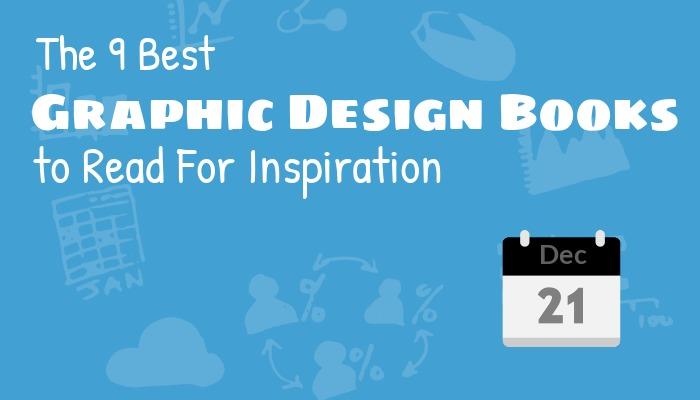Graphic design books that help you improve
If you have a sense of design, then you're in luck. Never before in history has business been so focused on visuals and aesthetics, which means that the need for graphic designers is more urgent than ever.
Whether you're a design veteran, a young beginner, a hustler, or someone considering a career change, improving your designer's mindset is how you'll rise above the rest and become the best graphic designer you can be.
Realize your graphic design potential by reading a book
For the reasons we'll examine in a moment, reading is one of the most effective ways to achieve this. It actually helps you become a more creative, insightful, and critical graphic designer and helps you realize your potential in an extremely competitive industry.
Ready to dive into a good book? So are we. Let's go!
Table of contents:
- ● Graphic design books that help you improve
- ● Realize your graphic design potential by reading a book
- ● A classic on the history of graphic design
- ● Thoughts on Design by Paul Rand
- ● Great Design Books on Typography
- ● Why Fonts Matter by Sarah Hyndman
- ● Type and Color: How to Design and Use Multicolored Typefaces by Mark van Wageningen
- ● Designing with Color in Mind
- ● The Secret Lives of Color by Kassia St Clair
- ● Best Graphic Design Books for Logos
- ● Logo Modernism: An Unprecedented Catalogue of Modern Trademarks by Jens Müller
- ● Archaic Modernism by Christophe Szpajdel
- ● Square Circle Triangle by Bruno Munari
- ● Branding and Graphic Design
- ● This Is Not a T-Shirt: A Brand, a Culture, a Community – A Life in Streetwear by Bobby Hundreds
- ● Brand Thinking and Other Noble Pursuits by Debbie Millman
- ● How Reading Will Energize Your Professional Design Game
- ● Detailed Design: Why In-Depth Reading is Better Than Skimming
- ● The Final Word: Tips for Designers Who Want to Learn More
- ● Read Within Design Topics
- ● Alternate Between Fun and Serious Reading
- ● Schedule Graphic Design Reading Time
- ● Keep a List of Graphic Design Books – But Don’t Be Afraid to Trim It
- ● Take Design Notes from Your Book if There’s Information You Really Want to Remember
- ● Consider Starting a Graphic Design Book Club, Online or Offline
- ● Read a Book Faster: Use James Clear’s Method – 20 Pages a Day
A classic on the history of graphic design
Thoughts on Design by Paul Rand

Rand's Reflections on Design are, for many, the forebear of design books. Derived from his 1947 essay on the same subject, it became the book we know today in 1970. Rand was the mind behind many company logos that shone in the 1960s, such as Morningstar, Westinghouse, ABC, and NeXT, and for many, he is the designer who best represents the glories of the 'Mad Men' design era.
After writing the book, Rand taught design at Yale until the 1990s, when he resigned in protest against postmodernism. This conflict has altered the memory of many, but Thoughts on Design is part of his legacy that continues to wield its influence. More a treatise than a workbook, it remains a must-read on every designer's list.
In short: Relatively brief and easy to read, this book is more cultural than instructive. Read it to gain a better understanding of the history and key figures in the graphic design industry.
Great Design Books on Typography
Why Fonts Matter by Sarah Hyndman

Still on the theme of typography but taking a very different approach, Why Fonts Matter is a study of how fonts affect emotion, communication, and human behavior, and how best to manipulate them for our own purposes.
The book is actually a reprint of The Type Taster: How Fonts Influence You with a new name and updated content, but retaining the user-friendly and accessible approach described as 'democratic' and 'informal'. If you’ve recently read too many dense technical design books, Why Fonts Matter might be the breath of fresh air you need to keep moving forward in your learning journey.
In short: Accessible and informative, yet still a deep dive into font theory and usage, Why Fonts Matter is sophisticated design made accessible to everyone.
Type and Color: How to Design and Use Multicolored Typefaces by Mark van Wageningen

Once you're comfortable with the basics of typography, dive into the wonderful world of color fonts with Type and Color: How to Design and Use Multicolored Typefaces. Using the book’s stunning cover as a starting point, it helps designers navigate the intersection of color theory and typography.
Offering advice on how to move beyond black and white without hurting your clients' eyes, the book itself is detailed and visually delightful. It’s a book that’s enjoyable to own and browse, in addition to being an essential educational work on any designer’s shelf.
In short: A visually appealing and educationally relevant deep dive into color and type, this book tackles a sub-theme that no designer will regret specializing in.
Designing with Color in Mind
The Secret Lives of Color by Kassia St Clair

If Chroma has left you wanting more humanity in your design classics, then Kassia St Clair's The Secret Lives of Color is an excellent next choice. This book tells the social, cultural, industrial, political, and historical stories of 75 fascinating colors, shades, and dyes. Many significant uses of color in history have astonishing stories behind them, from charcoal used to smear ancient drawings on cave walls to the yellow in Van Gogh’s Sunflowers. The book even explains why you don't need to slay dragons to get dragon’s blood (a vibrant dark red).
The Secret Lives of Color is a great read that you will enjoy, whether at your desk or sipping coffee at home. For a great visual supplement, check out the Instagram account that accompanies the book – as you might guess, it is absolutely stunning.
In short: Mix up your reading list with a book on color that delves into history and communication while temporarily setting aside theory.
Best Graphic Design Books for Logos
Logo Modernism: An Unprecedented Catalogue of Modern Trademarks by Jens Müller

Is your design library ready for logo modernism? A true tome of over 6,000 brands, this catalogue presents the most important and stylish company logos created during the 1940-1980 period, when modernist attitudes had a major impact on corporate identity.
Logo Modernism is divided into three main areas: geometric, effect, and typographic, and further into sub-sections such as alphabet, overlay, dots, and squares. It also includes profiles of influential designers and case studies of important logo projects, like the 1968 Mexico City Olympics.
In short: Designers love Logo Modernism as a deep and inspiring dive into modernist logos. It's a great reminder that logos can indeed be a thing of artistic beauty.
Archaic Modernism by Christophe Szpajdel

Archaic Modernism is a continuation of Christophe Szpajdel's Lord of the Logos, an incredibly unique logo book for the black metal community. With this new book and its striking, functional logos, Szpajdel has expanded his audience beyond the metal scene. He draws inspiration from a wide range of creative sources, including Art Deco and Art Nouveau.
Showcasing interactions with clients and how the artist integrates his research and inspiration into his work, Archaic Modernism portrays Szpajdel's artistic journey. He did not undertake this journey alone and collaborated with other artists such as illustrator Stan Dark Art. If you're looking for a book that immerses you in the artist's vision and philosophy, Archaic Modernism is worth getting.
In short: If you want a unique design book in your library that takes you on a journey into the artist's universe, Christophe Szpajdel's sequel to Lord of the Logos, Archaic Modernism, is worth checking out.
Square Circle Triangle by Bruno Munari

Bruno Munari was a legend of Italian design and in the 60s and 70s, he published individual case studies on the square, circle, and later, the triangle. These case studies led to the creation of Square Circle Triangle. Using ancient history and (relatively) modern designers like Le Corbusier as examples, Munari believed that basic and timeless shapes possessed unique qualities: the square represents security, the circle signifies the divine, and the triangle is a key connector.
Square Circle Triangle then explains how these 3 seemingly insignificant shapes are essential to our understanding of life, design, and the human experience. It is an surprisingly accessible and fun read, even though it might seem a bit whimsical, and it shows designers fascinating connections between shapes that, once seen, you will never forget.
In short: This unpretentious book is ideal for introducing creative introspection into the process of working with seemingly mundane and basic shapes.
Branding and Graphic Design
This Is Not a T-Shirt: A Brand, a Culture, a Community – A Life in Streetwear by Bobby Hundreds

If you want to dive into branding in an imaginative and creative way, it's essential to mix up your reading and make sure to digest a variety of sources and inspiration. Add This Is Not a T-Shirt to your reading list to keep things interesting. Even if you have never heard of The Hundreds (it's a streetwear brand), it is the story of the brand's evolution, told by co-founder Bobby Kim, also known as Bobby Hundreds.
It provides a great education on passion and graft, and makes for an interesting read regardless of your understanding of streetwear. More importantly, like Chroma, it offers a non-educational and non-pedagogical approach to something that is very relevant to your profession as a designer.
In short: Keep things fresh by reading books that are not necessarily academic or pedagogical. This Is Not a T-Shirt offers a new perspective on fashion, design, and branding.
Brand Thinking and Other Noble Pursuits by Debbie Millman

If you have never heard of Debbie Millman before, you will learn all about her in this book. She is a seasoned design expert who has been working in the field for 25 years and is already the author of How to Think Like a Great Graphic Designer, which gives a good insight into her talents. It is due to this illustrious career that she was able to gather ideas from 22 branding 'celebrities', including Wally Olins, Malcolm Gladwell, and Seth Godin.
Make no mistake, Brand Thinking and Other Noble Pursuits is not one of those books that is really just a collection of blog posts. It is an insightful and complex dialogue between her and her interviewees, their thoughts guided by the sensitivity of her experienced design sensibility. Debbie Millman also hosts a design-focused podcast, Design Matters, which might be a good introduction to her style and approach.
In short: Brand Thinking and Other Noble Pursuits is a series of interviews with people whose opinions on branding shape the industry. If you want to succeed, you need to know what they are saying.
How Reading Will Energize Your Professional Design Game
If you are still not convinced, we have very good reasons for you to get a book – any book! As a designer, you are at the heart of technology. This means you likely spend a lot of time reading excerpts, summaries, blog posts, and articles. This type of reading is called information gathering, but it's not deep reading.
Detailed Design: Why In-Depth Reading is Better Than Skimming
In-depth reading offers real neurological benefits. When you focus on the information in front of you, your brain is forced to make new connections between what it already knows and the new information you provide, because what the human brain needs more than anything is context and order.
This forces the brain to create new synapses and strengthen existing ones. That's why scientists believe that in-depth reading can help prevent age-related brain degeneration. And as if an enhanced brain weren't enough, reading has been proven to offer a range of benefits, from increased empathy to leadership skills, as well as stress relief and increased creativity.
The Final Word: Tips for Designers Who Want to Learn More
We know it’s not always easy to fit reading into an already busy schedule. Fear not, as we have 7 good tips that should help you.
Read Within Design Topics
Get more value by reading around a topic rather than jumping from one subject to another. After a few books on closely related topics, you’ll have exponentially broadened your knowledge.
Alternate Between Fun and Serious Reading
Don’t feel like the only worthwhile books are those that are really serious and technical. You’ll burn out if you don’t mix the books you enjoy with those you think you “should” read.
Schedule Graphic Design Reading Time
Life tends to expand to fill the space you give it. If you want to read, you need to schedule it, so carve out time in your schedule and treat it as seriously as any other appointment you have.
Keep a List of Graphic Design Books – But Don’t Be Afraid to Trim It
As you find books that interest you, add them to a “to-read” list to never run out of ideas (and keep the list handy – you never know when you’ll end up in a used bookstore). That said, don’t be afraid to trim the list over time: there’s no reason to read a book that no longer interests you just because it’s been on your list forever.
Take Design Notes from Your Book if There’s Information You Really Want to Remember
If a book contains information you really want to remember (which is highly likely with more technical books), consider taking notes, just like you did in school or college. There is solid scientific evidence that information you write down is much more likely to stick in your mind.
Consider Starting a Graphic Design Book Club, Online or Offline
Book clubs aren’t dead – they’ve just moved online! Consider starting a graphic design book club. Besides giving more structure to your reading, you’ll make new friends and discover new networking connections.
Read a Book Faster: Use James Clear’s Method – 20 Pages a Day
Finally, consider James Clear’s reading method. He reads 20 pages of a book each day first thing in the morning. It takes about 30 minutes and is key to getting through dozens of brain-changing books each year.
Reading is what sets the great apart from the good. It helps create leaders and visionaries and allows designers to excel in all areas, not just when you’re sitting in front of PhotoShop. Want to level up as a designer in 2021? Start reading today. For more design tips, check out oureBook “Creative Ideas to Boost Sales.”

Niamh


